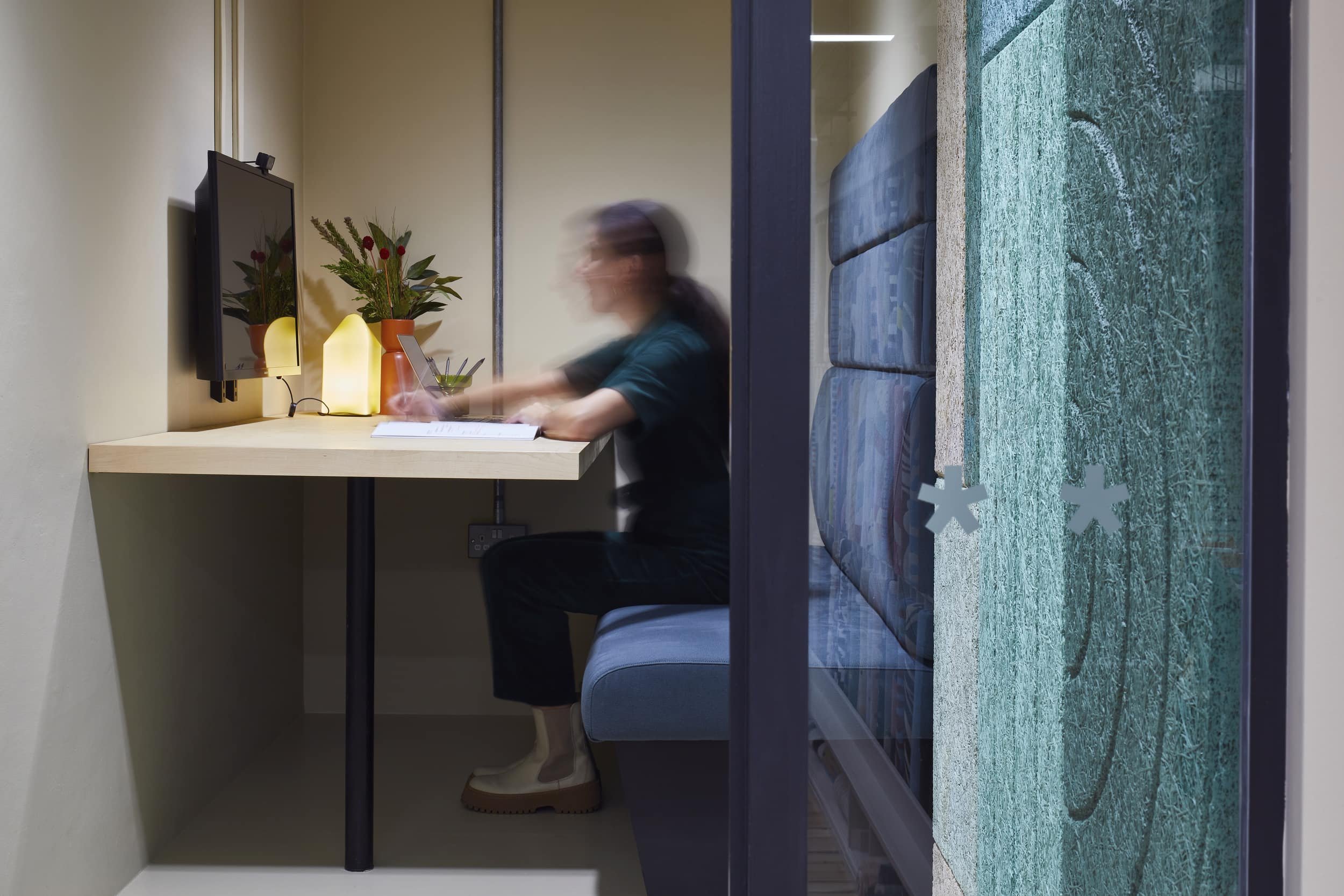Designing a virtually inclusive office
With flexible working firmly establish in company culture, designing virtually inclusive spaces in offices is essential for creating a work environment where all employees, whether they are in the office or working remotely, can collaborate effectively and feel equally included. Here are some key considerations and strategies worth considering if you want your office to be more virtually inclusive…
At our own HQ, one of our most used rooms is our zoom booth where up to three people can connect virtually and is supported with sound insulation, additional monitor, microphone and lighting set up
A bespoke scrum we design for MVF Global featured built in AV equipment and acoustic support meant virtually inclusive meetings can take place on the office floor without disturbing the office
Technology Infrastructure
Ensure that your office is equipped with robust technology infrastructure, including high-speed internet, video conferencing tools, and collaboration software that support seamless communication between in-office and remote employees.
Quality Audio and Video
Invest in high-quality audio and video equipment for meeting rooms and workspaces to ensure that virtual participants can see and hear clearly. Consider using ceiling microphones and high-definition cameras. In open areas where interactive and virtual scrums are needed, ensure acoustic support is provided through dividers
Equal Access to Resources
Make sure that all meeting rooms have access to the same technology and resources, including video conferencing equipment and interactive whiteboards.
Virtual Whiteboards and Collaboration Tools
Incorporate virtual whiteboards and digital collaboration tools that allow employees to brainstorm, take notes, and work on projects together, whether they are in the office or remote.
Meeting Room Layout
When thinking about virtual equality, the layout of a meeting room plays a crucial role. Historially larger meeting rooms used to be for in-room presentations. Large TVs dominated one end of the room so that the head of the tabel could present easily to the rest of the room. However, this set up is not conducive to meeting spaces where one or more participants are joining virtually. At the end of the room, it’s really easy to get ignored and also not be able to see the room effectively. If a meeting needs to be virtually inclusive, consider placing the TV centrally on one of the longest walls (assuming a rectangular space) and place furniture around it.
Illustration showing a virtually inclusive layout
High backed chairs with acoustic fabric are a great way of providing spaces to take private phonecalls
One / two person pods
Provide built-in or bought in pod solutions to support staff who are in the office and need to communicate externally. The pods should feature sound insulation, ventilation and echo-free acoustics. Our clients often tewll us these are the most used office spaces now so it’s important to invest in the adequate number.
Private nooks
Regular, virtual catch ups don’t have to include video and for our health, limited screen time is a good thing so the provision of nooks where staff can take private phone calls is critical and will help not overload the pods spaces.
Clear Signage, Instructions and Regular Training
There have been huge leaps in technology and huge choices of technological soltuions to help us achieve virtaul integration however not eveyrone has the ability to pick up this new tech as quiclly as other. Ensure adequate provision of training to employees on how to use virtual collaboration tools effectively and ensure that they are comfortable with the technology. Plus, place clear signage and instructions in meeting rooms and common areas to guide employees on how to use technology and create an inclusive meeting environment.
At Moo.com, easily accessible devices come with instructions on how to use the mobile interactive whiteboards
There isn’t really a ‘one-size-fits-all’ approach to being virtually inclusive as this will largely be guided by a companies own attitude towards working practices and flexible working however by considering these strategies and regulary assessing the effectiveness through employee feedback, you can create a workspace where all employees, whether in the office or remote, can collaborate, communicate, and thrive together.
Author: Nadia Themistocleous, Lead Interior Designer, Trifle*
Nadia has worked with Trifle* since 2016 and has been the interior lead for some of our most ambitious projects to date including MVF, BenchSci and TriliTech. Prior to Trifle* and managing her own interior design company, she worked for a decade in advertising and the music industry creating and executing creative campaigns and events. She is passionate about translating our client’s culture, identity or ways of working into the spaces they inhabit ensuring that every space created for our clients is as unique as their business or home is.







